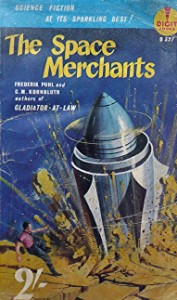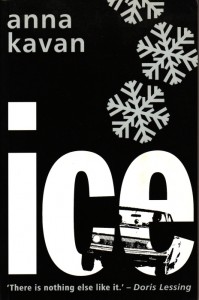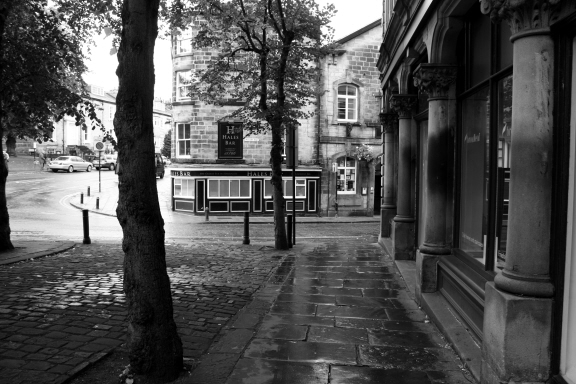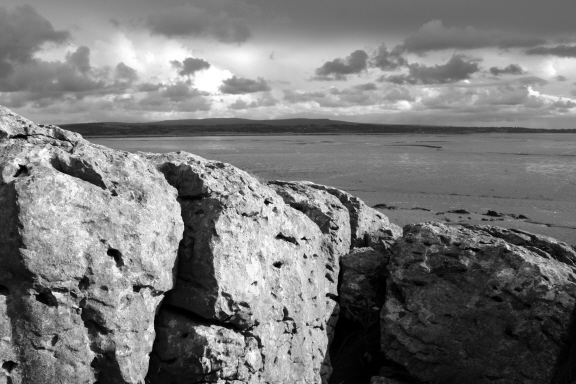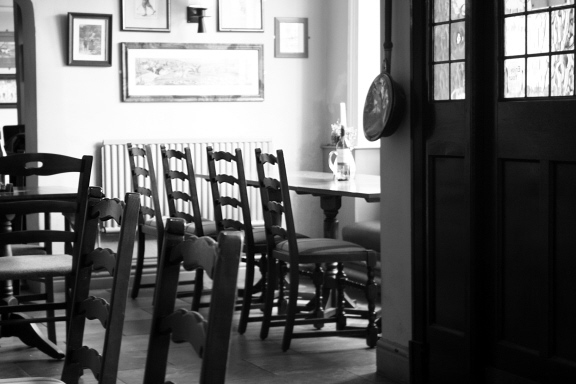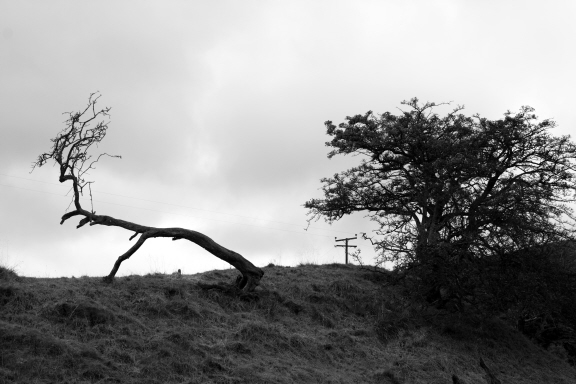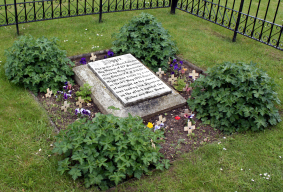“Science fiction is the cockroach in the house of books: it survives on scraps and never goes away. Occasionally, as in the work of HG Wells and JG Ballard, it becomes sublime.” (From the Guardian, 19th November 2012.)
This comment (part of an essay which was semi-jokingly trying to create all sorts of new literary genres) was written by Robert McCrum, an associate editor of the Observer. Before he joined the newspaper McCrum worked at Faber & Faber as an editor.
It was in this capacity that I met him in the early 1980s. Before his arrival he had been described to me by Matthew Evans, the Chairman of Faber, as a representative of the new generation of editors who was going to be brought in to revitalize the Faber fiction list. McCrum duly took up his post and some time later he took me to lunch. At this time I had been with Faber since 1969 and had published all my books with them. These included my first five novels, a short story collection, an anthology and a children’s book. I felt my position with Faber was more or less secure, although by instinct I never take anything for granted – just as well, as it turned out. At the time of our lunch I had recently delivered my new novel to Faber, The Affirmation. The editor for this was Charles Monteith, one of the greatest of all post-war book editors, who worked with William Golding, P. D. James, Lawrence Durrell, Philip Larkin, Brian Aldiss, many more. Charles Monteith was due to retire from Faber shortly, and McCrum was his replacement.
“You’ve had it easy up to now,” McCrum said to me over lunch. “Faber’s going to change out of all recognition. The big boys are in town.” I looked at this young chap with the pink ears and shiny face – he looked as if he had started shaving earlier that week. I asked him which of my books he had read … in particular had he read The Affirmation? “I don’t read sci-fi,” he said in a pained voice, implying of course I don’t read rubbish, as you should know. He went on, “If you want to stay publishing with Faber you’re going to have to look to your laurels.” In spite of my many qualms about being defined by science fiction, or indeed any other genre, I realized that arguing with this rising young star of publishing was going to be a complex and difficult matter. No time for that then – our lunch was quickly over.
I knew only one thing about McCrum before we met: he had just published his own first novel, In the Secret State. On my way home I bought a copy. I read it on the train and finished it that evening. It was an illuminating experience: McCrum was a lousy writer! The novel is a sort of sub-genre of the Le Carré type of thriller, told through the medium of former public schoolboys mingling with each other in the secret services, and having to interview lesser types, while making knowing allusions to privilege and position, and betrayal of the class by those whom they feel should know better. Familiar enough, but McCrum’s addition to this genre was amateurish and incompetent. I couldn’t help wondering why any pro publisher had accepted it. He was incapable of controlling a short scene, let alone a whole novel. Clumsy viewpoint shifts occurred two or three times a page and he could not imagine or describe a scene with any conviction. His attention to detail was erratic and often incorrect. The dialogue in particular had a phoney feel to it, and the book depended heavily on the use of this unconvincing dialogue.
A working relationship between me and this young high-flyer seemed likely to be problematic. The point needs to be made that I do not expect my editor to be a published novelist. In fact, most of the editors I have got along with best have not been writers. For a sole example, Charles Monteith never to my knowledge published a word of fiction in his life. The other editors I have worked most productively with over the years have been the same. However, if an editor should in fact turn out to be a fellow professional then I naturally expect that he or she should be at least as competent as me, and preferably more so. To judge by In the Secret State, McCrum had a lot to learn. I certainly did not feel like taking any lessons in writing from him, not then, or indeed now, three decades later.
It’s perhaps just as well that writers and their editors do not have daily contact. I kept my head down and began work on my next novel, The Glamour. Charles Monteith duly retired, and McCrum’s reign at Faber began. I had only intermittent dealings with him over the next two or three years. On one occasion he sent me a manuscript by a young writer he had just taken on, saying he felt that some of the “sci-fi” elements needed an expert view. Gritting my teeth I read the thing – it was OK, but the writer was as hopeless at viewpoint as McCrum himself. Suspecting I was flogging a dead horse, I wrote a detailed report to McCrum, and gave as just one example of poorly handled viewpoint a chase scene where every moment of doubt or fear or suspense was undermined by the writer’s habit of switching between the characters, so that nothing was left to the reader’s imagination. When the novel finally came out I was interested to discover that the clumsy shifting around of viewpoint was just as I had read it before, except in the one scene I picked out as an example, where this simple technique was now handled correctly. McCrum hadn’t been able to convey a basic editorial point to the writer, not because he didn’t agree but because he clearly didn’t get it.
In the meantime, The Affirmation had been published. It suffered poor sales in hardback and Faber had great trouble in selling paperback rights. McCrum and Matthew Evans took me to lunch, ostensibly to talk about future plans, but told me they wanted to “reposition” me in the market. I was suddenly interested. To me, this meant that Faber were acknowledging they had published and sold The Affirmation inadequately, and they were planning to do something about it. I listened carefully. “What we want you to do,” McCrum said, “is get in your car and go out and discover England.”
Although it was optioned to Faber, my next novel, The Glamour, was published by Jonathan Cape.
McCrum’s career as a publisher is usually regarded as successful. The Faber general fiction list, which until his arrival was clearly looking a bit moribund, was duly revitalized. The firm has now, once again, become a leading publisher of literary fiction. This sort of “repositioning” is of course a result of a business decision as much as an editorial one. A company with a blue-chip literary reputation like Faber will have no problem attracting the best novelists if an effort is made, with an editor appointed to make the effort and propagate the new policy to literary agents and speak encouragingly to the writers. Meanwhile, the company will back up the initiative by making the right sort of money available. Since those days McCrum has moved on – for a while he was Literary Editor at the Observer. Now as one of that newspaper’s associate editors he appears to be a freelance commentator on the world of books, writing regularly for the Guardian blog.
McCrum’s weakness is that he will not acknowledge his blind spots. Genre fiction, or what he thinks is genre fiction, is the prime example. He abdicates himself from addressing the problem by assuming that genre fiction abides by rules and conventions that general fiction does not, and that it has an orthodoxy he neither understands nor wishes to learn about. He thinks it is a specialist form that can only be dealt with by an editor with specialist expertise. On the whole he believes that genre fiction lacks the greatest challenges of literary fiction by taking a less demanding route, an easier way. He sees all genre writers as buttressed by an undiscriminating fan readership. He assumes they lack any clear critical standards or apparatus, and that they are untalented or unambitious.
This is true in varying degrees of all writers and all areas of fiction, but to take literature seriously we have to look at its best examples. McCrum seems unable to grasp that. He dismisses what he does not know as being worth only his lip-service, his derision.
That is his weakness, but the real problem is that he is out of date. When I met him thirty years ago I could temporarily forgive his callow manner and patrician attitudes, but I was alarmed and discouraged by his conventional and unoriginal approach to literature. Out of date then, and still out of date now, to judge by the flippant and ignorant article I quoted at the beginning of this. I find his glowing, exempting reference to J. G. Ballard particularly offensive, as when I knew him McCrum had never even heard of Ballard, a writer whose astonishing work had been influential since the late 1950s, but whose presence only dawned on the likes of McCrum after Empire of the Sun was published in 1984. Anyone who doubts McCrum’s wider areas of weakness should glance through the 68 comments that followed his appearance on the Guardian website.
